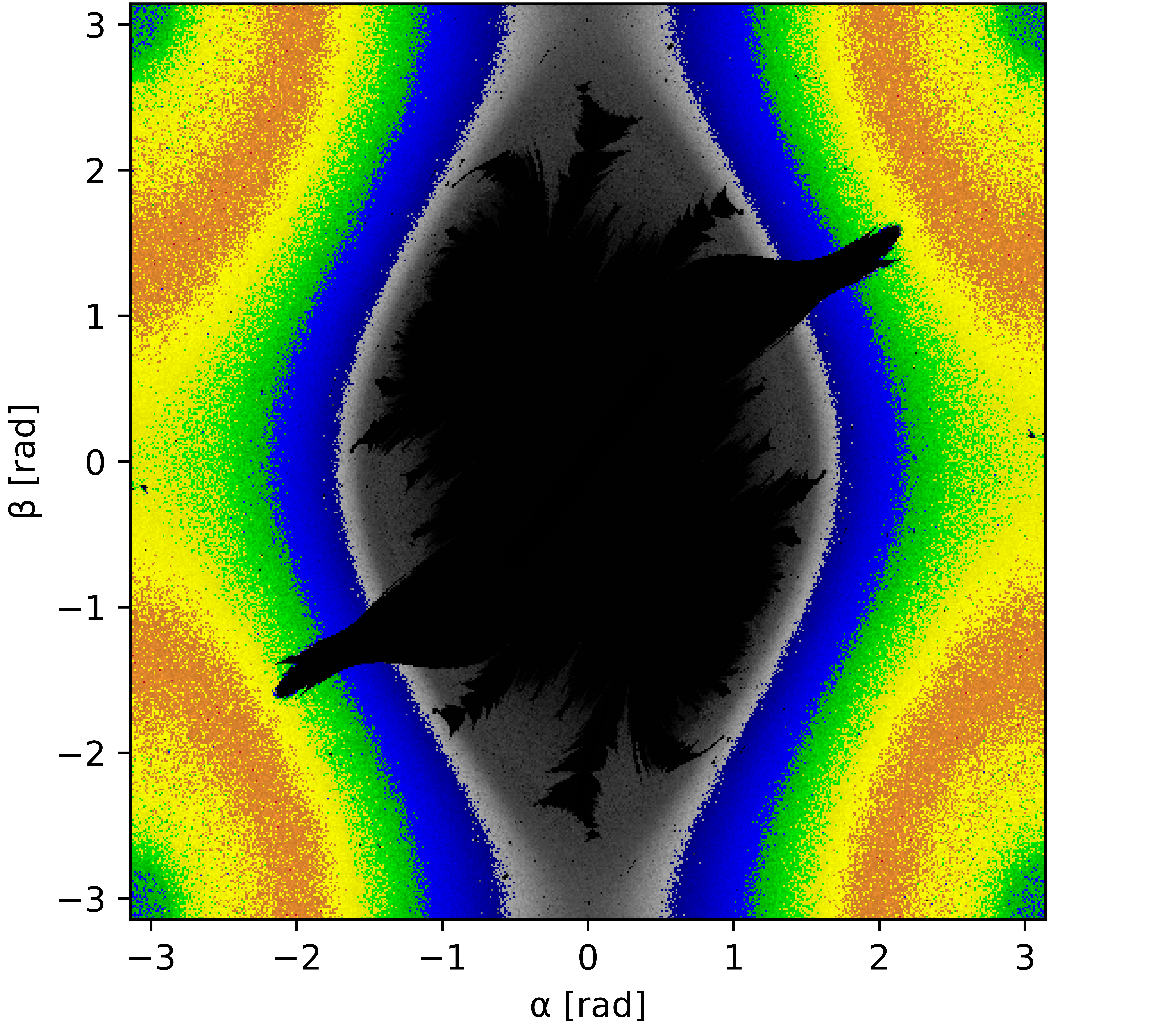This repository contains a summary of the project Fractal Dimension as an Indicator for Divergence in Double Pendulums, written as a final project of high scool ("gymnasiearbete") by
- Adam Johansson
- Olle Ahlin
- Anton Mattsson
- Victor Millberg
In the project, fractals were generated by considering a grid of initial conditions for a double pendulum. If
This image corresponds to a double pendulum with equal rod lengths
This hypothesis was tested by comparing fractal dimension against the Maximum Lyapunov Exponent (MLE), being the average exponential rate of chaotic divergence, in the sense that two separate trajectories
Our results showed that a slight correlation between the coputed fractal dimensions and the MLE existed, but seeing as the data had a very large spread, it was hard to draw any definitive conclusions as to whether this behaviour would be expected in other systems as well.
The full report (in swedish) is available at Rapport/Rapport.pdf.
The simulations where carried out using fourth order Runge Kutta with a time step of 0.001 s.


